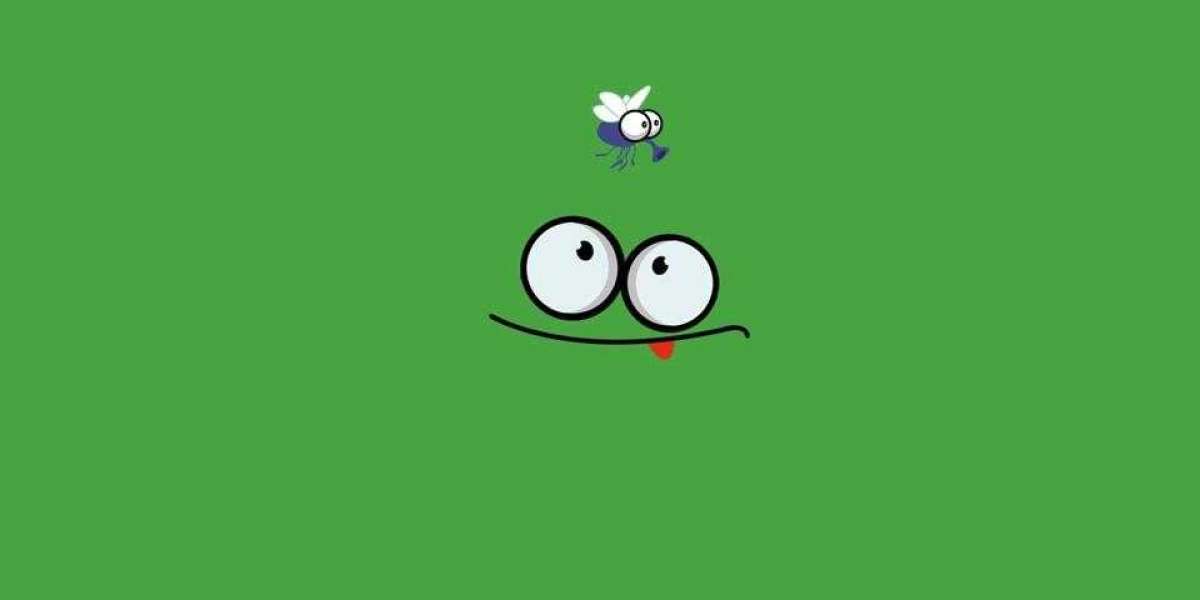Most Important Things You Need To Do To Start A Textile Business
India is among the largest exporter of textiles and apparel in the world making it the most lucrative business to invest into. It is the largest exporter of cotton and jute in the world along with silk and handwoven fabrics being the second highest. The industry contributes 12 percent to the total exports of the country. It has strengths across the entire value chain from fiber, yarn, fabric to apparel. The industry has a great potential for both manufacturers and retailers thinking to get into the textile business. In this article, you will know everything about starting a textile business from scratch.
Depending on the investment and interest of business required in manufacturing and selling textiles, choose whether you want to be a manufacturer or a retailer that will buy from the manufacturer and sell to the customer.
1. Research the existing market analyze the right demand to supply
First of all, you need to know everything about the demand in the existing market of textile business. You need to find the right market for best selling fabrics and textiles. Research on which textile and fabrics are popular in demand. Analyze which fabric is more profitable to sell as per the manufacturing cost and market price. Study what existing niche competitors are doing to sell those profitable fabrics in the market. Checking on your competitors gives you a good lead to make your business profitable.
2. Get a place to sell
You need to rent or buy a place to store and sell the fabrics you will buy from the manufacturers. Or if you are planning to step into manufacturing, either way you would need to rent or buy land for a factory. An ideal place is essential to your business. It places you within the reach of customers and suppliers. It also reduces transportation costs and ensures convenience to your potential customers.
3. Gather capital and funds
The textile business will require a decent amount of investment. The operating cost of manufacturing factory for textile production apart from the rent/cost of the land. The cost of equipment like knitting machines to knit yarn, weaving machines to weave thread, cloth cutting machines to cut cloth, etc. For retailers, again the cost of acquiring land for shops. The funds required to start the inventory and maintain stock for uninterrupted selling.
4. Decide over a name for your textile business and apply for mandatory licenses
After deciding a decent name for your textile business, you would need to acquire following mandatory licenses to legalize your business,
– GSTIN and PAN number
– Trade License
– Shop Establishment License
– Trademark Registration
– Pollution Factory License, for manufacturers
For textile business name ideas, you can read our blog: Best Textile Shop Names
5. Contact the suppliers
Now once you’re registered and ready with mandatory licenses, you are ready for the next step. In the case of retail textile business, you can now arrange a list of manufacturers and contact them one by one. Detail down the cost they would charge for your initial stock. Choose the manufacturer depending on the transportation cost and select accordingly. Similarly in the case of manufacturing business, arrange a list of suppliers of raw materials. Contact them one by one. Select the supplier that is ready to give you at minimum cost.
Luxury Towel Talk: The Ultimate Guide to Terry Cloth
Terry or "terry cloth" is a special type of weave that makes bath towels softer and more absorbent. This article delivers an overview of the different styles of terry used in luxury bath towels, beach towels, bath mats, and robes.If you're like most people, you probably don't devote much thought to the specific weave of your luxury bath towel. Of course, you want your towel to look beautiful, feel great, and perform well, but the details of how it's made may fly below your radar. However, if you crave towels and robes that are luxurious, soft to the touch, and super absorbent -- and who doesn't? -- you're probably a lover of terry cloth (even if you didn't know it).
The term “terry cloth” is almost synonymous with the word “towel,” but terry is actually a specific style of weaving. First introduced in the 1840s, terry is made with uncut loops -- known as “pile” -- that stand up off the base, or ground, of the fabric. Most fabric is made weaving yarn in two directions: vertical (warp) and transverse horizontal (weft). Terry cloth is made using two warp beams: the ground warp, which helps form the base of the towel, and the pile warp, which creates the loops of thread. These loops stand off the base on both sides of the fabric to increase surface area, enhance absorbency, and maintain a soft feel.
Traditional terry cloth is woven from cotton; however, it can also be made from silk, linen, polyester and other man-made fibers, or blends. (Fun fact: the very first terry weave was made from silk). Today, high-quality terry is typically made of cotton, because -- unlike other materials that weaken in water -- the absorbent fiber in cotton gets stronger when wet. In fact, cotton can absorb 20 to 30 times its own weight in water. The loop pile acts as a sponge while withstanding squeezing, pulling, rubbing, twisting and turning.
Thanks to its fantastic absorbency, cotton terry is a wonderful choice for towels, bath mats, bath robes, beach and pool towels. Terry towels can easily be dyed or printed, as well as decoratively embroidered. To help you navigate all the available options, Fine Linen and Bath is pleased to offer unlimited free fabric swatches so you can examine color, weight, and feel prior to ordering your luxury towels, robes, or bath mats.
As we mentioned above, terry cloth is distinguished by uncut loops that extend up off the woven base of the fabric. These loops add extra surface to make the terry fluffy and extra absorbent. But not all terry is the same; along with variations in quality (more on that later) there are several different popular styles of terry:
Long Loop Terry: Maximum Absorbency
As the name says, long loop terry fabric has extra-long loops, which make it super luxurious and absorbent. A towel, bath mat, or bathrobe made of high quality long loop terry is a great investment and a top choice among our customers.
Terry Velour: Great for Bath and Beach
While regular terry features loops on both sides of the fabric, terry velour has loops on just one side. The other side is cut short to make a velvety soft, smooth surface. This indulgent weave is often used in a textured pattern for luxury bath towels, but is also a popular style for luxury beach towels as well as bathrobes.
French Terry Cloth: A Sporty Weave
French terry is a knit fabric, also with loops only on one side. This style is used primarily for sweatshirts, casual clothing, and other knit sportswear as opposed to bath linen. This style terry is also seen sometimes on Turkish or Hamam beach towels where one side is woven with the other having a very short loop terry for added absorbency.
What Is Cotton Fabric?
Cotton fabric is one of the most commonly used types of fabrics in the world. This textile is chemically organic, which means that it does not contain any synthetic compounds. Cotton fabric is derived from the fibers surrounding the seeds of cotton plants, which emerge in a round, fluffy formation once the seeds are mature.
The earliest evidence for the use of cotton fibers in textiles is from the Mehrgarh and Rakhigarhi sites in India, which date to approximately 5000 BC. The Indus Valley Civilization, which spanned the Indian Subcontinent from 3300 to 1300 BC, was able to flourish due to cotton cultivation, which provided the people of this culture with readily available sources of clothing and other textiles.
It’s possible that people in the Americas used cotton for textiles as long ago as 5500 BC, but it’s clear that cotton cultivation was widespread throughout Mesoamerica since at least 4200 BC. While the Ancient Chinese relied more on silk than cotton for the production of textiles, cotton cultivation was popular in China during the Han dynasty, which lasted from 206 BC to 220 AD.
While cotton cultivation was widespread in both Arabia and Iran, this textile plant didn’t make its way to Europe in full force until the late Middle Ages. Before this point, Europeans believed that cotton grew on mysterious trees in India, and some scholars during this period even suggested that this textile was a type of wool that was produced by sheep that grew on trees.
The Islamic conquest of the Iberian Peninsula, however, introduced Europeans to cotton production, and the European countries quickly became major producers and exporters of cotton along with Egypt and India.
Since the earliest days of cotton cultivation, this fabric has been prized for its exceptional breathability and lightness. Cotton fabric is also incredibly soft, but it has heat retention attributes that make it something like a mixture of silk and wool.
While cotton is more durable than silk, it is less durable than wool, and this fabric is relatively prone to pilling, rips, and tears. Nonetheless, cotton remains one of the most popular and highly produced fabrics in the world. This textile has relatively high tensile strength, and its natural coloring is white or slightly yellowish.
Cotton is very water absorbent, but it also dries quickly, which makes it highly moisture wicking. You can wash cotton in high heat, and this fabric drapes well on your body. However, cotton fabric is relatively prone to wrinkling, and it will shrink when washed unless it is exposed to a pre-treatment.
How Is Cotton Fabric Made?
Cotton fabric producers derive this textile from the fibrous protective casing that surrounds cotton seeds, which is called a boll. While cotton seeds themselves are quite small, the bolls that encase them can be larger than the end of your thumb.
To make cotton fabric, producers must first separate the cotton seed from the boll. In the past, this step was done by hand, but in 1794, American entrepreneur Eli Whitney invented the cotton gin, which is a mechanical device that greatly expedites the cotton separation process.
These days, automated forms of the cotton gin exist that make the process even easier for human workers. Machines can harvest cotton bolls from agricultural fields, and other machines can then separate the seeds from the bolls.
Cotton production begins in the spring when cotton seeds are planted. In most cases, automated machines plant cotton seeds in 10 or more rows simultaneously. Seedlings emerge within approximately seven days, and mature cotton bolls appear within 55 to 80 days.
Prior to machine harvesting, human workers are generally required for defoliation, which is the process of removing the leaves from cotton plants. Next, a single machine harvests the amount of cotton that 50 people could pick, and this same machine removes large contaminants from the cotton fibers and forms it into bales.
High-efficiency automated cotton gins can process up to 60 raw cotton bales weighing 500 pounds each in the space of an hour. These gins remove the seeds from cotton bolls, and they also remove any dirt or trash from the cotton.
Once cotton has been cleaned to the extent that it consists of pure cotton fibers without any seeds or trash, it is transferred to a textile production facility. At this facility, the raw cotton is carded, which is the process of forming cotton fibers into long strands. Next, these strands are spun to create yarn.
At this stage, the basic material used in cotton fabrics is complete. This cotton yarn may then be subjected to a variety of chemical treatments, and it may be dyed. Next, it is woven into a particular type of textile material such as a bedsheet, T-shirt, or pair of blue jeans.
Denim vs jeans - why they are so expensive
Before we get started... The definition of jeans can be a little confusing. Let's start with, what is the difference between denim and jeans? Denim is the fabric. And jeans are the garment. So denim jeans are jeans made out of denim. When we think of jeans, we all usually think of blue color, blue cotton twill weave pants. Like the casual wear kind, Levi Strauss made famous.
The definition of denim is also flexible. Denim generally has an indigo dyed warp yarn, and natural or white filling yarn. And, is traditionally a twill fabric with a 3x1 construction. Twill fabrics are characterized by tiny running parallel lines at a 45-degree angle in the fabric.
Technically jeans can be made out of other fabrics than denims. There are non denim jeans made with different fabrics. And, there are different types of denim jeans, like black or white - they aren't always indigo. But, for the sake of this article, we are going to talk about the iconic cotton (sometimes with stretch, blue jeans.
Let's bust a myth right now. When it comes to quality in the world of fashion, the truth is, you usually don’t get what you pay for.
I was inspired to write this guide after a friend sent me Refinery29's article All The Differences Between $200 Jeans $20 Ones. Wow, the level of misinformation. After years of developing denim, working in wash houses, assisting in corporate denim development courses, giving training lessons at mills and factories on quality, and volunteering for the Fashion Institute of Technologies' Textile Development and Marketing Senior Thesis Denim Project I am going to share with you all of the denim industries secrets.
I would love to see more experts teaching consumers like this Teen Vogue video featuring Benjamin Smith - Creative Director of Jordache. This guy knows his stuff, and props to Teen Vogue for getting the advice of someone that works in the industry.
So, in the spirit of myth-busting fake news, this week we will break down my picks for cheap, medium, and high-end denim.
Then we will rank them according to fiber content, stretch, fabric quality, indigo color, where they were made, how well they were sewn, and how advanced the finishes are.



